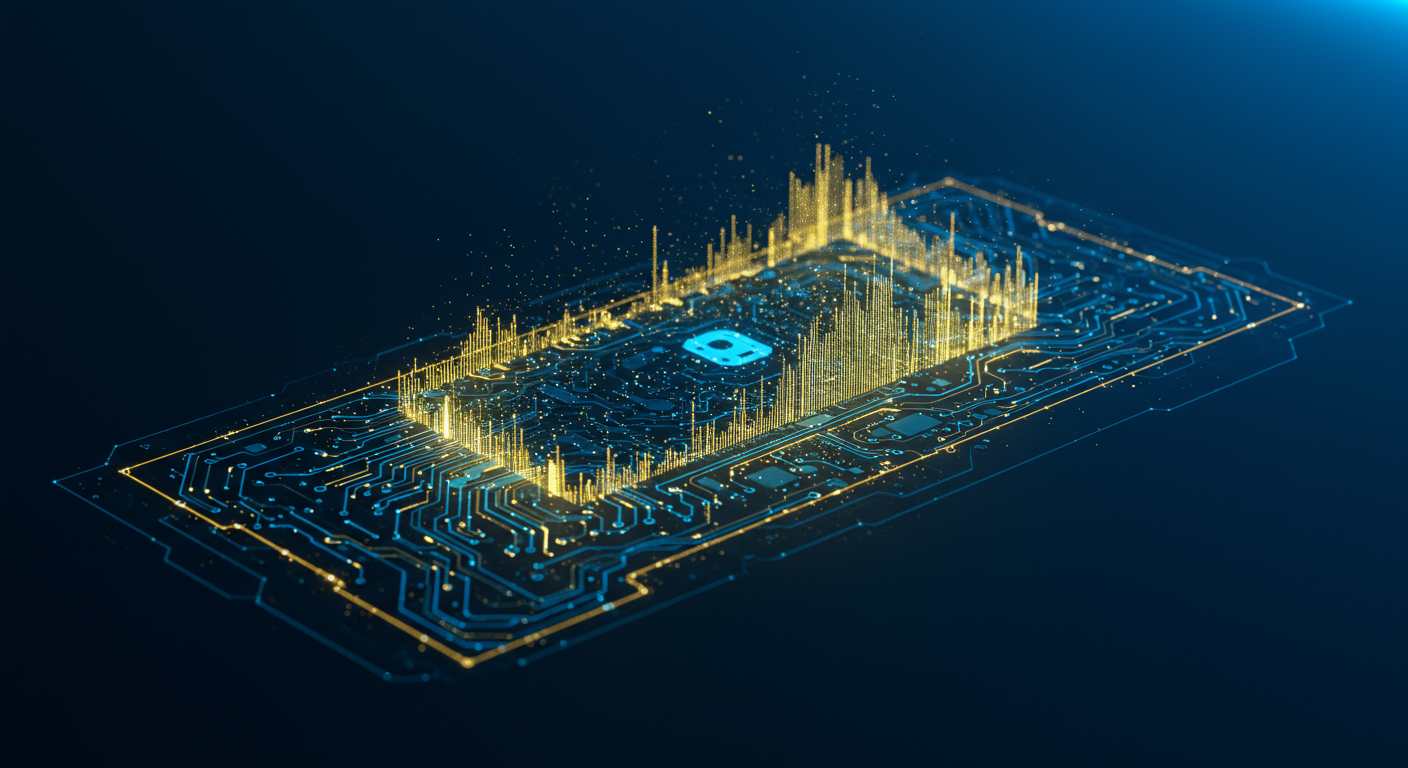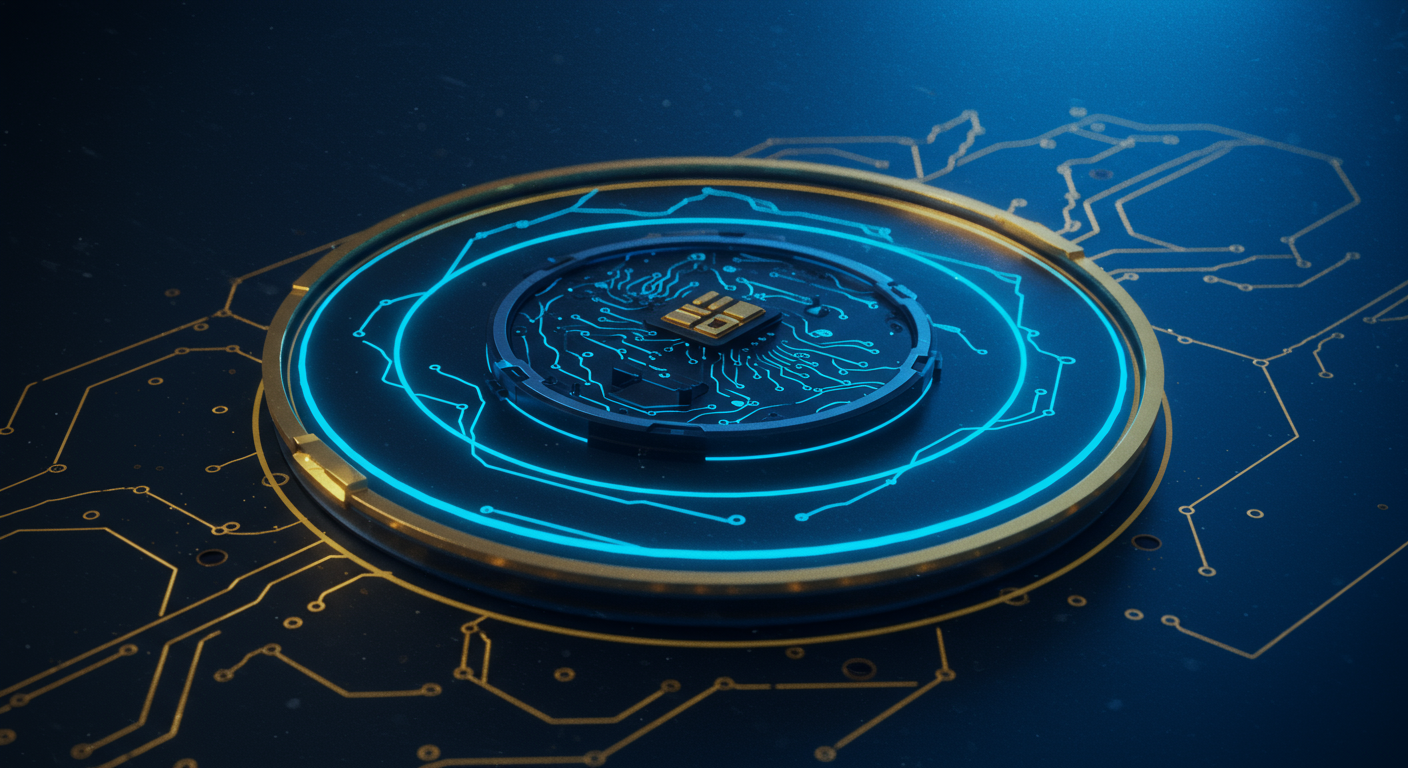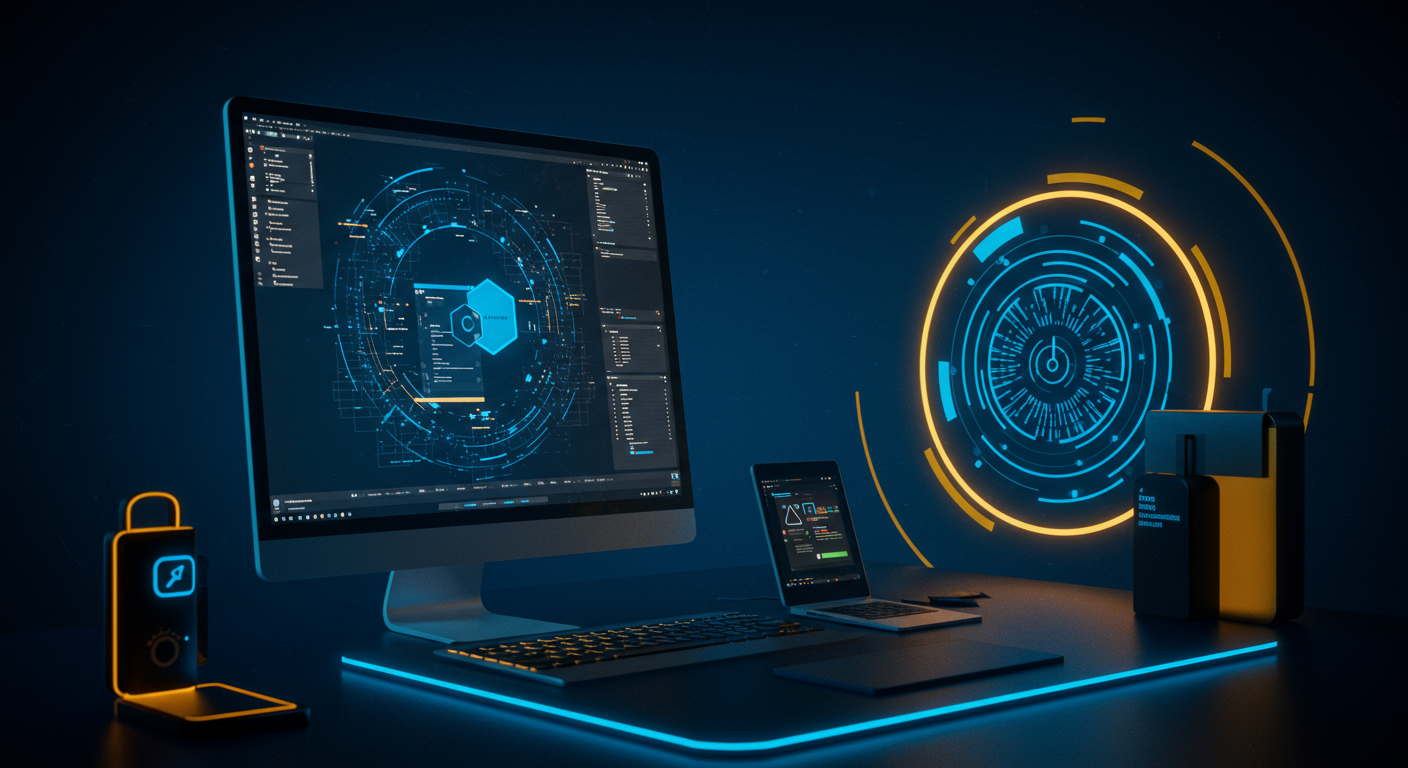Docker for AI: Unlock Reproducibility, Portability, and Consistent Environments

Docker and AI: A Perfect Synergy for Modern Development
Ready to untangle the chaos of AI development?
What is Docker, Anyway?
Docker, in essence, is like a perfectly sealed shipping container for your software. It bundles everything – code, runtime, system tools, libraries, and settings – into a single, portable package. This "containerization" ensures your application runs consistently across any environment. Think of it as a self-contained ecosystem for your AI models, eliminating the dreaded "it works on my machine" problem.
The AI Development Dilemma
AI/ML projects are notorious for their complex dependencies, leading to significant headaches:
- Dependency Hell: Different AI models often require specific, and sometimes conflicting, versions of libraries like TensorFlow or PyTorch.
- Reproducibility Crisis: Getting consistent results across different environments can be a nightmare, making it hard to debug and collaborate.
- Scalability Bottlenecks: Deploying AI models to production often involves wrestling with infrastructure configurations.
Revolutionizing the AI Workflow
The benefits are clear. With Docker, Software Developers can ensure:
- Simplified Dependency Management: Package all dependencies into a container.
- Guaranteed Reproducibility: Consistent results, regardless of the underlying infrastructure.
- Effortless Scalability: Deploy containers to any Docker-compatible platform.
Reproducibility is paramount in AI – without it, progress stagnates, trust erodes, and groundbreaking models remain academic curiosities.
The "Works on My Machine" Problem
We've all been there: a model performs brilliantly in the lab but crumbles in deployment. Why? Often, it boils down to inconsistent environments.
Docker solves this by encapsulating your entire AI project – code, runtime, system tools, system libraries, settings – into a lightweight, portable container. Think of it like a snapshot of your development environment.
Dependency Hell Be Gone!
AI projects are notorious for their tangled web of dependencies. Specific versions of TensorFlow, PyTorch, CUDA, and countless libraries can clash. Docker images meticulously document these dependencies, ensuring everyone uses the exact same setup. For example, a TensorFlow Docker image guarantees consistent model execution, regardless of the underlying hardware.
Streamlining Collaboration
Docker fosters seamless collaboration among data scientists. Share Docker images, not just code, to guarantee that everyone is working with an identical, well-defined environment. Imagine deploying a cutting-edge image generation model, knowing that your colleagues can effortlessly replicate your results.
Reproducible AI isn't just a nice-to-have – it's the bedrock of credible research, reliable products, and collaborative innovation. Let's build AI that works everywhere, every time. Next up, we'll explore how Docker enhances portability...
Portability: Deploying AI Models Anywhere with Ease
Imagine running your cutting-edge AI model not just in the cloud, but on your local machine, a corporate server, or even a tiny edge device – Docker makes that a reality.
The Docker Container: Your AI Model's Spaceship
Think of Docker containers like miniature spaceships for your AI models. They bundle everything – the model itself, its code dependencies, system tools, libraries, and settings – into one neat, self-contained unit. No more "it works on my machine" headaches!
AI Model Deployment: From Cloud to Edge
With Docker, deploying your models becomes as easy as shipping containers across the globe:
- Cloud Platforms: AWS, Azure, GCP – you name it. Docker ensures your model runs consistently across different cloud environments.
- On-Premise Servers: Maintain control and security by deploying Docker containers on your own infrastructure.
- Edge Devices: Run AI closer to the data source with edge deployment, ideal for real-time applications.
Streamlined Deployment: Say Goodbye to Integration Nightmares
Traditionally, deploying AI models involved tedious environment setups and troubleshooting dependency conflicts. Docker simplifies this drastically, cutting down deployment time and integration issues. It’s like having a universal adapter for all your deployment needs. Consider using Code Assistance AI Tools for integrating Docker into your workflow.
Docker’s portability empowers you to deploy AI models seamlessly across diverse platforms, whether in the cloud, on your servers, or even at the edge. Next, we explore how this technology ensures consistent performance, boosting confidence in your AI initiatives.
Docker has become more than just a trendy tech buzzword; it's now the keystone for ensuring consistency across the entire AI lifecycle.
Environment Parity: Eliminating Configuration Drift in AI Projects
Environment parity is the holy grail of consistent AI model training and inference: ensuring your code behaves identically, regardless of where it runs.
Why Parity Matters
Think of it this way:Imagine baking a cake – the slightest change in oven temperature or ingredient quality can drastically alter the outcome.
Similarly, even subtle differences in software versions, system libraries, or environment variables can lead to "configuration drift," causing models to perform unpredictably or even fail outright when moved from development to production.
Docker's Role: The Consistency Champion
Docker acts like a self-contained shipping container for your AI project. It packages everything – code, runtime, system tools, libraries, and settings – into a single, immutable unit. This container guarantees an identical environment across development, testing, and production phases.Defining Consistency: The Dockerfile Blueprint
You define this consistent environment using aDockerfile, a simple text file specifying all the necessary components. This file serves as a recipe to build your Docker image, ensuring every instance is an exact clone, eliminating configuration drift and preventing unexpected behavior.Managing Complexity: A Necessary Challenge
While Docker greatly simplifies environment management, complex AI projects can still present challenges. Strategies include:- Using multi-stage builds to minimize image size.
- Employing Docker Compose to manage multi-container applications.
- Leveraging infrastructure-as-code tools for automated deployments.
Docker's role in AI is no longer a nice-to-have, but a need-to-have for reproducible, scalable, and shareable projects.
Optimizing Docker for AI: Best Practices and Advanced Techniques
Here's the deal – getting Docker right can drastically impact your AI workflows. Forget bloated images and inconsistent environments; let's aim for efficiency.
- Multi-Stage Builds: Think of it like a refined recipe. Start with all the ingredients (dependencies) in one stage, then cherry-pick only what you need for the final image. Smaller is faster!
- Image Layering: Docker's magic lies in layers. By ordering your
Dockerfilestrategically (frequently changing code last), you leverage caching for faster builds. - Minimize Image Size: Ditch unnecessary files and use smaller base images (Alpine Linux is your friend) to keep your footprint lean.
GPU Optimization: Unleash the Beast
AI loves GPUs, but Docker needs a little nudge to play nice.
- NVIDIA Container Toolkit: This is your golden ticket. It allows seamless GPU access from within your containers. Find it at NVIDIA Container Toolkit AI and say goodbye to driver headaches.
- Runtime Flags: Utilize
--gpus all(or specific device IDs) when running your containers to expose the GPU.
Security and Resource Management: Play it Safe
"With great power comes great responsibility." That's especially true for Dockerized AI.
- User Privileges: Run processes as non-root users inside the container.
- Resource Limits: Use
docker runflags like--memoryand--cpusto prevent resource hogging.
Docker Compose: Orchestrating the Symphony
For complex, multi-container AI applications, Docker Compose is your conductor. Define your services in a docker-compose.yml file for easy management.
Data Volume Management: Taming the Data Deluge
- Bind Mounts: For development, directly mount your host's directories into the container.
- Named Volumes: For production, create Docker-managed volumes for persistent storage.
Harnessing the power of containers with Docker is no longer a futuristic fantasy; it’s the present, and its influence is only growing.
Serverless AI: The Container-Free Horizon
Serverless computing is fundamentally changing the landscape, and AI is no exception.
Imagine deploying AI models without the overhead of managing servers. Serverless AI Docker handles all the infrastructure nitty-gritty, allowing developers (like those who use Software Developer Tools) to focus solely on code. Docker containers are still important, providing the base images for functions, but developers don't need to manage them directly, offering even greater agility.
Kubernetes Integration: Orchestrating AI at Scale
Containers are cool, but Kubernetes is the conductor. Kubernetes AI Docker allows you to orchestrate and scale your AI deployments seamlessly. Kubernetes handles resource allocation, deployment, scaling, and healing automatically, ensuring your AI models run smoothly even under heavy load. Think of it as a self-driving car for your AI infrastructure.
Edge AI: Bringing Intelligence Closer to the Source

The future isn't just in the cloud; it's at the edge. Edge AI Docker deploys AI models directly onto edge devices like smartphones, cameras, or IoT sensors. Docker containers ensure consistent environments across diverse hardware, enabling real-time processing with reduced latency. This is crucial for applications like autonomous vehicles and smart cities.
Key Trends Shaping the Future:
- Increased automation: AI-powered tools will automate Docker image creation and optimization.
- Enhanced security: Improved container security features will protect AI models from unauthorized access.
- Broader industry adoption: Docker will become even more integral in industries from scientific research to marketing automation.
Here's your Docker onboarding ramp for the AI era.
Getting Started with Docker for AI: A Practical Guide
Ready to wrangle your AI projects like a pro? Docker is your secret weapon, ensuring reproducibility and consistent environments across any machine. No more "but it works on my machine!" headaches.
Dockerizing Your AI Project: Step-by-Step

- Install Docker: Head over to Docker's official site and download the version suited to your OS. Installation is straightforward – just follow the instructions.
- Create a Dockerfile: This is your recipe for building a Docker image. Place it in the root of your AI project. Think of it as instructions for a robot chef, specifying everything needed to bake your AI cake.
- Define Your Base Image: Start with a pre-built image. For TensorFlow, use
FROM tensorflow/tensorflow:latest-gpu-jupyterif you need GPU support. For PyTorch, tryFROM pytorch/pytorch:latest-gpu-py3.10. These images come pre-loaded with essential dependencies, like CUDA. Check out Software Developer Tools to simplify your workflow. - Install Dependencies: Use
RUN pip install -r requirements.txtto install your project's dependencies, listed in arequirements.txtfile. - Copy Your Code:
COPY . .copies your project's source code into the Docker image.
Sample Dockerfile: TensorFlow & PyTorch
dockerfile
# For TensorFlow FROM tensorflow/tensorflow:latest-gpu-jupyter WORKDIR /app COPY requirements.txt . RUN pip install -r requirements.txt COPY . . # For PyTorch FROM pytorch/pytorch:latest-gpu-py3.10 WORKDIR /app COPY requirements.txt . RUN pip install -r requirements.txt COPY . .
Troubleshooting Common Docker Issues
- Image build errors: Carefully examine your Dockerfile syntax and dependencies.
- Port conflicts: Ensure the ports your application uses aren't already in use on your host machine.
- GPU access issues: Make sure the NVIDIA Container Toolkit is correctly installed if you're using GPU-accelerated images.
Further Learning
- Official Docker documentation
- Online tutorials and courses on Docker for Data Science. If you are an AI Enthusiast, there are lots of amazing free tutorials online.
Keywords
Docker AI, AI Development Docker, Reproducible AI environments, Docker for Machine Learning, AI stack Docker, Docker containerization AI, Portability AI models, Environment parity AI, AI workflow automation Docker, Docker benefits for AI, GPU support Docker AI, AI model deployment Docker
Hashtags
#AIDevelopment #DockerAI #ReproducibleAI #Containerization #AIWorkflows
Recommended AI tools
ChatGPT
Conversational AI
AI research, productivity, and conversation—smarter thinking, deeper insights.
Sora
Video Generation
Create stunning, realistic videos and audio from text, images, or video—remix and collaborate with Sora, OpenAI’s advanced generative video app.
Google Gemini
Conversational AI
Your everyday Google AI assistant for creativity, research, and productivity
Perplexity
Search & Discovery
Clear answers from reliable sources, powered by AI.
DeepSeek
Conversational AI
Efficient open-weight AI models for advanced reasoning and research
Freepik AI Image Generator
Image Generation
Generate on-brand AI images from text, sketches, or photos—fast, realistic, and ready for commercial use.
About the Author

Written by
Dr. William Bobos
Dr. William Bobos (known as 'Dr. Bob') is a long-time AI expert focused on practical evaluations of AI tools and frameworks. He frequently tests new releases, reads academic papers, and tracks industry news to translate breakthroughs into real-world use. At Best AI Tools, he curates clear, actionable insights for builders, researchers, and decision-makers.
More from Dr.

